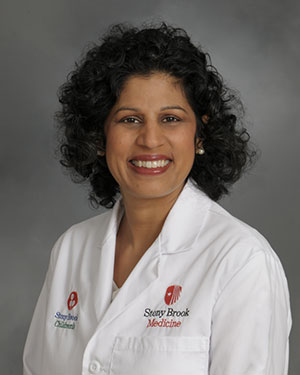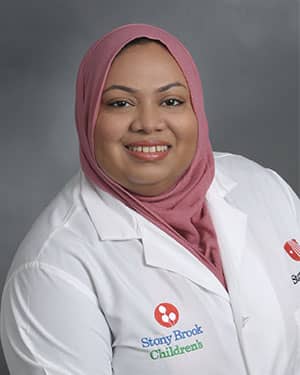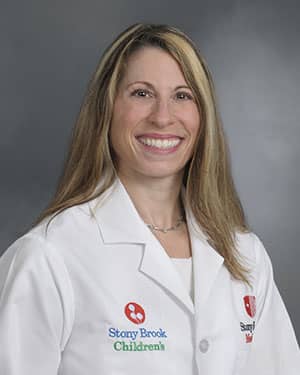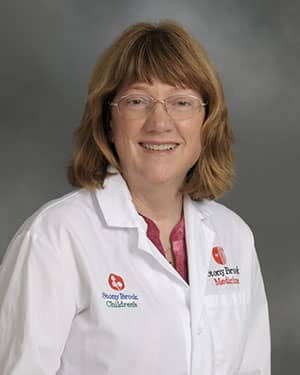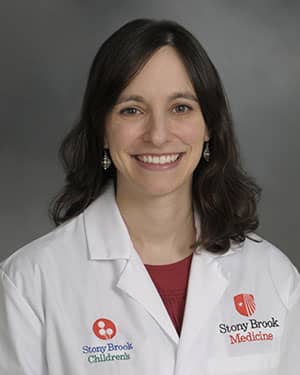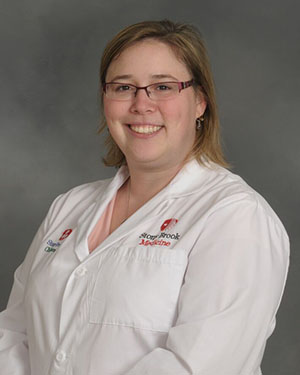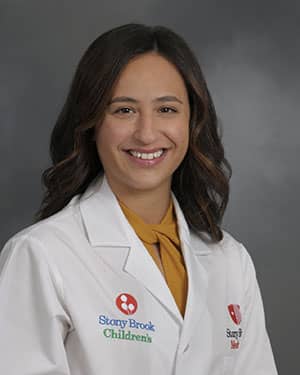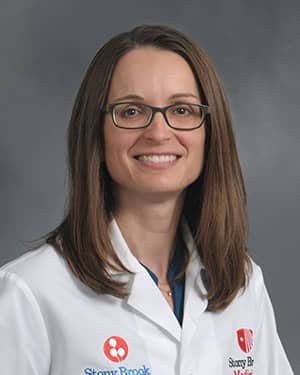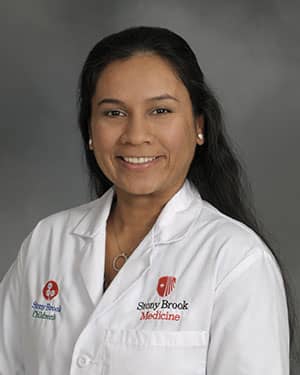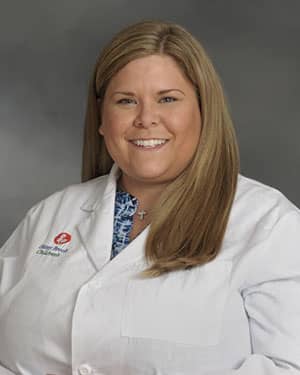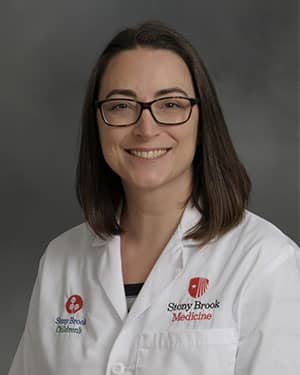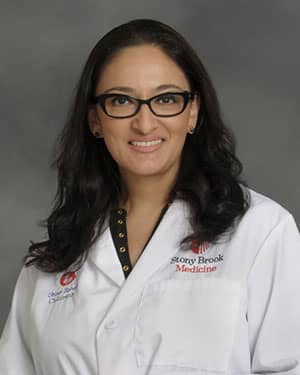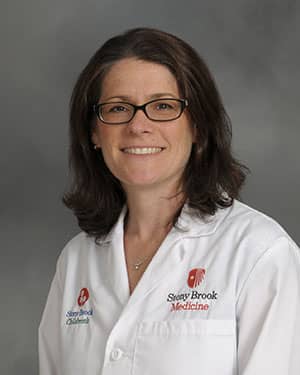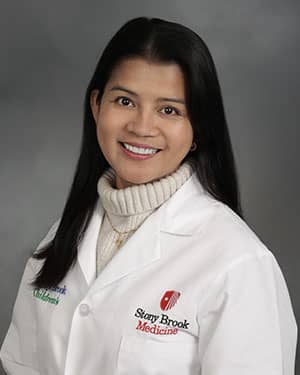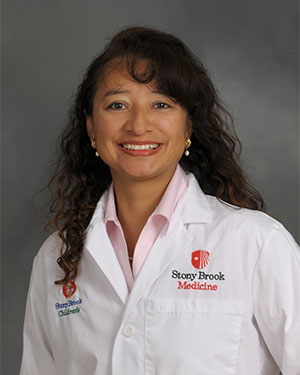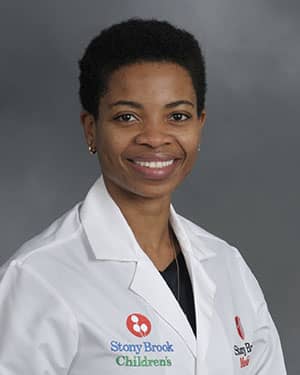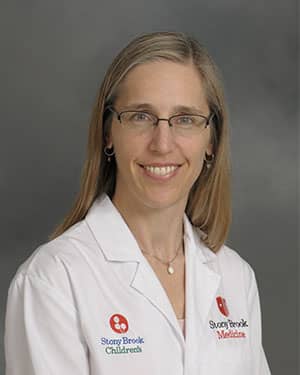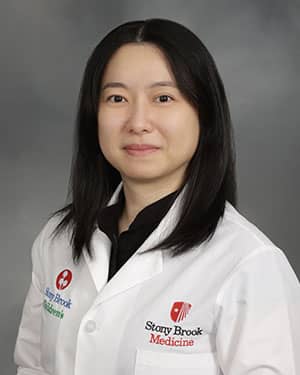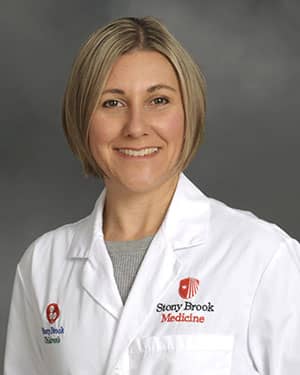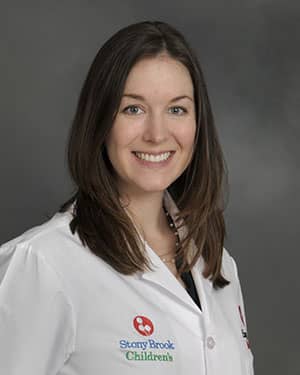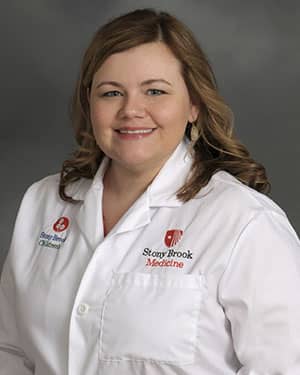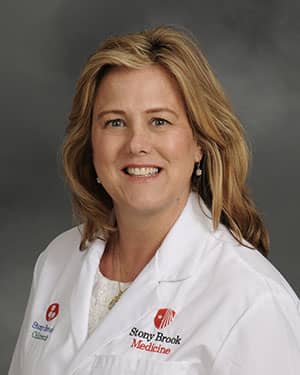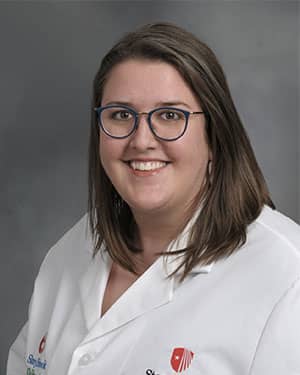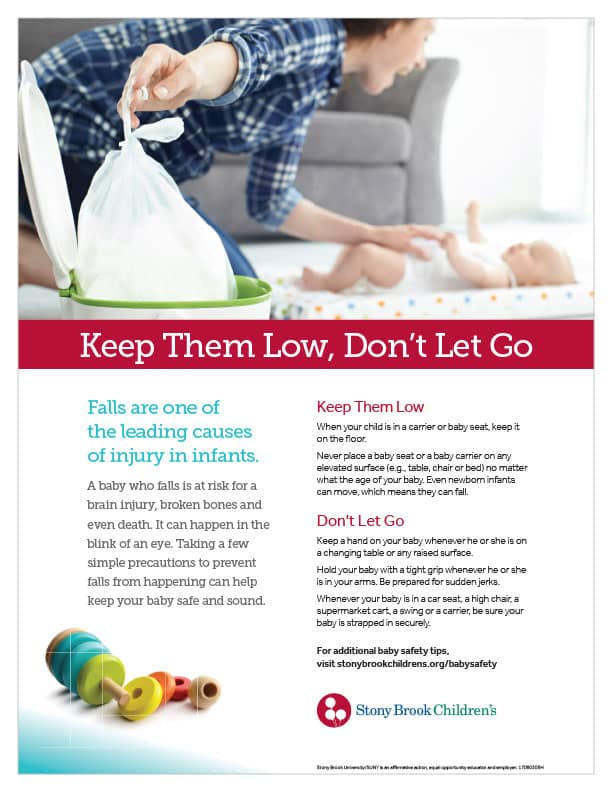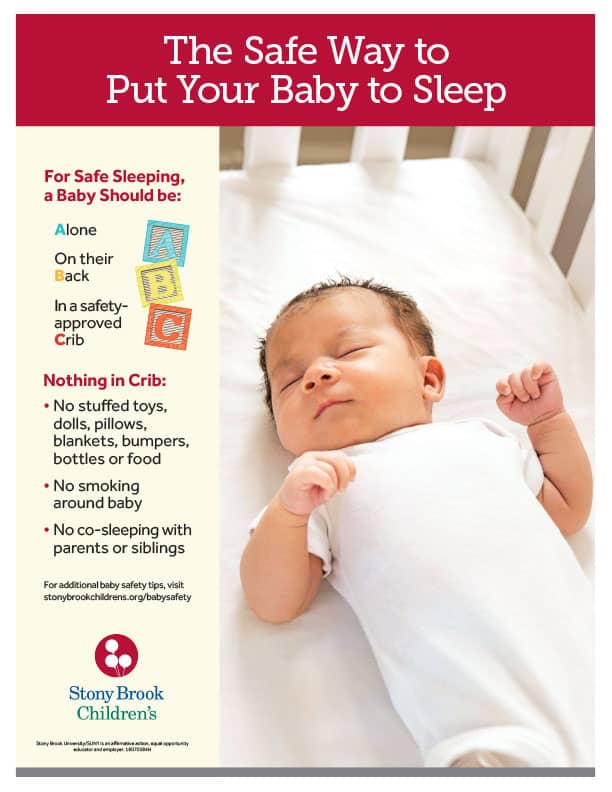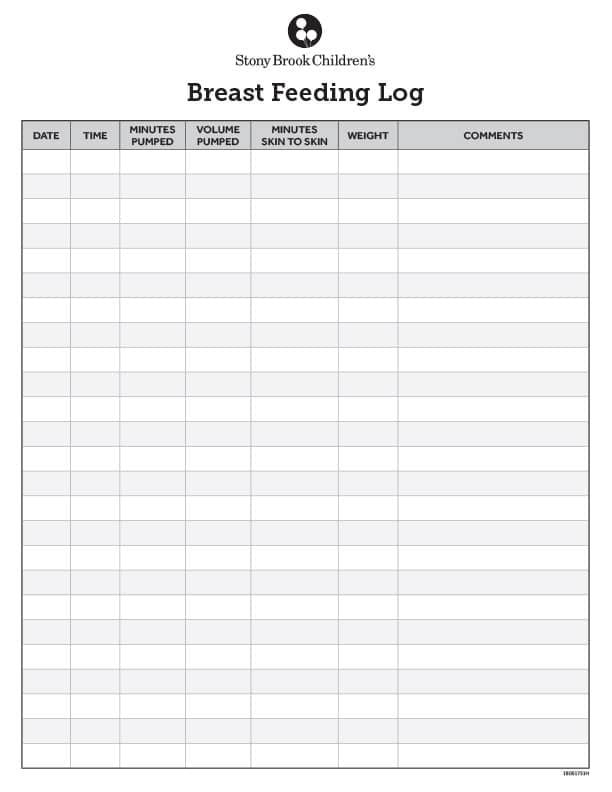Navigation Pediatric Primary Care
Pediatric Primary Care
Keeping children healthy is the primary goal of Stony Brook Children's Service's primary care program. Our general pediatricians provide comprehensive primary care, including routine well and sick care for children from birth through age 21, at multiple Suffolk County locations. Our East Islip office is also staffed by physicians who can provide care for your whole family, including adults. Evening and weekend hours are available at all sites.
Services
Our practice earned Patient-Centered Medical Home (PCMH) recognition from the National Committee for Quality Assurance (NCQA). This approach makes your child’s primary care doctor, along with the Medical Home Team, the point around which all care revolves.
We believe PCMH is the best way to organize and deliver primary healthcare because it provides an opportunity for you to develop trusted, long-term relationships with your child’s doctor and team. Your team coordinates services at every point of the healthcare delivery — prevention, hospitalization, specialty care, community services and support. This results in more personalized, coordinated, efficient, and, ultimately, effective care.
With a patient-centered medical home approach, all healthcare, both routine and urgent, is highly accessible to you, your child and your entire family. Good communication is emphasized.
PCMH also takes full advantage of the latest information technology to prescribe, communicate, track test results, obtain clinical support information and monitor performance. Just as important, you and your family have a whole team that knows you, your child and your family’s history on your side — not just in treating illness but in supporting lifelong good health.
Our Team
Unlike many university-based primary care programs, Stony Brook Children's Services dedicates two or three full-time staff physicians to a single location, rather than rotating them among multiple offices. All our pediatricians are board certified, and serve as educators in our School of Medicine, teaching the next generation of physicians as medical students, residents and fellows.
Our PCMH care is delivered by our entire practice team. Led by your child’s primary care physician, this team of medical professionals builds lifelong relationships with your child. Because all care is coordinated through them, they help ensure that aspects of your child’s care do not “fall through the cracks.” They help avoid costly and unnecessary duplication of services such as routine laboratory procedures. They provide support, education and guidance; deliver evidence-based care; look for the most cost-effective solutions; and are culturally sensitive to your family’s language and belief system. They follow your child’s growth and development and become your partner in health.
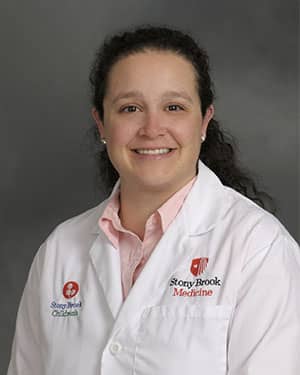
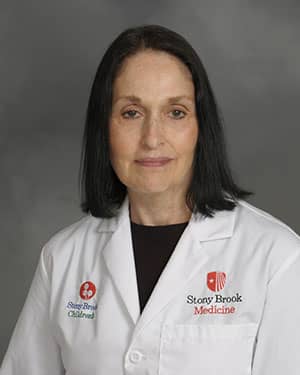
Locations
Center Moriches Primary Care
600 Main Street, Suite ACenter Moriches, New York 11940
(631) 444-KIDS (5437)
Lake Grove Primary Care
4 Smith Haven Mall, Suite 101Lake Grove, New York 11755
(631) 444-KIDS (5437)
Smithtown Primary Care
260 Middle Country Road, Suite 107Smithtown, New York 11787
(631) 444-KIDS (5437)
Wading River Advanced Pediatric Care
5968 Route 25A, Bldg 2Wading River, NY 11792
(631) 444-KIDS (5437)
Fax: (631) 929-0360
Baby Safety Tips
As part of Long Island’s premier academic medical center, Stony Brook Children’s Hospital’s care extends beyond our walls into our communities. We are not only dedicated to caring for sick and injured children, but also to helping to prevent illness and injury. To support parents and caregivers, we’ve compiled information and important tips on baby safety.
Print this sheet out about Fall Prevention
Keep Them Low, Don’t Let Go
In our hospital and trauma center, we consistently find the leading cause of injury related to hospitalization in babies is falls, most commonly resulting in traumatic brain injury. Following just a few simple suggestions can help protect your baby.
- When your child is in a carrier or baby seat, keep it on the floor
- Never place a baby seat or a baby carrier on any elevated surface (e.g., table, chair or bed) no matter what the age of your baby. Even newborn infants can move, which means they can fall
- Keep a hand on your baby whenever he or she is on a changing table or any raised surface
- Hold your baby with a tight grip whenever he or she is in your arms. Be prepared for sudden jerks
- Whenever your baby is in a car seat, a high chair, a supermarket cart, a swing or a carrier, be sure your baby is strapped in securely
Print this sheet out about the ABCs of Infant Safe Sleep
Learn the ABCs of Infant Safe Sleep — Alone. Back. Crib.
- Follow these tips and the ABCs of infant safe sleep:
- Room sharing with parents is great. But you should never sleep in a bed with your baby
- Never place babies to sleep on adult beds, chairs, sofas, waterbeds, pillows, cushions or soft surfaces
- Dress your baby in sleep clothing, such as a sleep sack, and do not use a blanket
- Avoid letting the baby get too hot. Keep room temperatures in a range comfortable for a lightly clothed adult (68 to 72 degrees)
- Infants should receive all recommended vaccinations
- Breastfeeding is recommended to help to reduce the risk of SIDS
- Consider using a pacifier at nap time and bedtime, once breastfeeding is well established
- Avoid smoke exposure during pregnancy and after birth. Place the crib in an area that is always smoke free
- Supervised, awake tummy time is recommended daily to facilitate development
- Make sure everyone who cares for your baby, including child care providers, family and friends, knows about the importance of placing your baby to sleep on his/her back for every sleep
- Obtain regular prenatal care to reduce the risk of SIDS even before birth
- Avoid alcohol and illicit drug use during pregnancy and after birth
- Babies should ride in a safety-approved car seat facing the rear of the car for the first two years of life
- Car seats should be installed in the back seat
- Harness straps should be snug against your child
- Avoid putting bulky clothing on your child when placing him/her in the car seat. Even in cold weather, dress your baby in lightweight clothing, buckle the harness securely, and use a blanket tucked around your child for warmth
- Place the harness retainer clip at armpit level
- Purchase a car seat that fits your child, vehicle and budget
- NEVER leave your child alone in a car, not even for a minute
- Be sure to read the vehicle owner’s manual AND the car seat instructions for proper installation instructions
- If you need help installing your car seat, or want it installed by a safety expert, you can find a fitting/inspection station at Child Passenger Safety | Governor's Traffic Safety Committee
For more information about car seat safety, call (631) 444-3783.
Understanding that it’s often normal for babies to cry and how to properly soothe your baby can help keep you from getting anxious and upset yourself.
- Babies cry for a lot of reasons: hunger, pain, tired, clothes too tight, dirty diapers, too hot, too cold
- Call your healthcare provider if your baby acts sick or appears to be in pain
- If your baby does have an illness or a disease, it is important to take whatever measures are appropriate for that condition in order to treat it
- However, often crying is NOT due to sickness, illness or disease, but is part of the normal early behavioral development of your baby
- There is a normal increase in crying that occurs in the first months of your baby’s life. When this happens ask yourself the following questions:
- Why is my baby crying?
- What can I do to calm my baby?
The Five S’s to Soothing a Fussy Baby
Swaddle
Swaddle your crying or fussy baby snugly, with arms at the sides, using a thin blanket.
Side or Stomach
Once swaddled, position your baby on its side or stomach when it’s in your arms or on your lap. NEVER put your baby to sleep on its side or stomach.
Shush
A shush sound can calm and comfort your baby, help stop crying and fussing, and help your baby go to sleep and stay asleep. Newborns don't need silence. In fact, they're happier and better able to calm down and sleep in a noisy environment.
Loudly say and repeat "shhh" into your swaddled baby's ear as you hold him or her on side or tummy.
Put your lips right next to your baby's ear and "shhh" while also gently jiggling the baby. Shush as loudly as your baby is crying. As the baby calms down, lower the volume of your shushing to match.
Swing
Do not swing your baby in a baby swing. Instead gently jiggle your swaddled baby using very small, rapid movements in your arms.
While shushing your swaddled baby in a side or stomach position, support your baby’s head and gently jiggle – DO NOT SHAKE!
Move back and forth no more than an inch in any direction.
Suck
Give the baby a pacifier or thumb to suck on. Pacifiers reduce the risk of SIDS, so it's okay to let your baby keep the pacifier in bed.
Every baby is different, so experiment and see what works for your child.
Sometimes when babies cry they can’t be soothed. If your baby is fed, has a clean diaper, isn’t too hot or too cold or in pain, and can’t be soothed, your baby may be going through a period of PURPLE crying.
The Letters in PURPLE stand for:
- P - Peak
Your baby may cry more each week, the most in month 2, then less in months 3 to 5 - U - Unexpected
Crying can come and go and you don’t know why - R – Resists soothing
Your baby may not stop crying, no matter what you try - P – Pain-like face
A crying baby may look like they’re in pain, even when they are not - L – Long Lasting
Crying can last up to five hours a day, or more - E – Evening
Your baby may cry more in the late afternoon or evening
For more information visit:
Breast milk is best for baby because it offers these benefits:
- Easier for your baby to digest
- Doesn't need to be prepared
- Always available
- Contains all the nutrients, calories, and fluids your baby needs
- Contains growth factors that ensure optimal development of organs
- Has substances that formulas don't have that protect your baby from many diseases and infections
Breastfed babies are less likely to develop:
- Ear infections
- Diarrhea
- Pneumonia
- Wheezing
- Bronchiolitis and other bacterial and viral infections, such as meningitis
Breastfeeding may help to protect babies from:
- Obesity
- Diabetes
- Sudden Infant Death Syndrome (SIDS)
- Asthma
- Eczema
- Colitis
- Certain cancers
Breastfeeding also benefits the mother by:
- Releasing hormones in your body that promote mothering behavior
- Returning your uterus to the size it was before pregnancy quicker
- Burning more calories, which may help you lose the weight
- Reducing the risk of ovarian cancer and breast cancer
- Keeping bones strong, which helps protect against bone fractures in older age
Important to know:
- Formula is an acceptable alternative to breast milk
- Feed your baby ONLY breast milk or formula
- Feed every 2-3 hours day and night
- Never heat milk or formula in a microwave
- Store milk or formula as directed
For more information, call (631) 444-3783.
Feel free to print this Breastfeeding Log out to help you keep track of the number of times you pump and the volume of milk you produce. Feel free to also share it with others who have infants.
Above: that link is another PDF, so will need to put it in a new page or just use it as an image in this page.
Research and Education
In addition to their dedication to clinical care, Stony Brook pediatricians are committed to training and teaching the next generation of leaders in pediatrics. Each of our physicians also serves as a member of the faculty of the Stony Brook University School of Medicine. Under staff supervision, medical residents who wish to specialize in pediatrics may polish their clinical, psychosocial and community leadership skills in our Continuity Clinics (in the ambulatory clinics), as well as within satellite locations.

